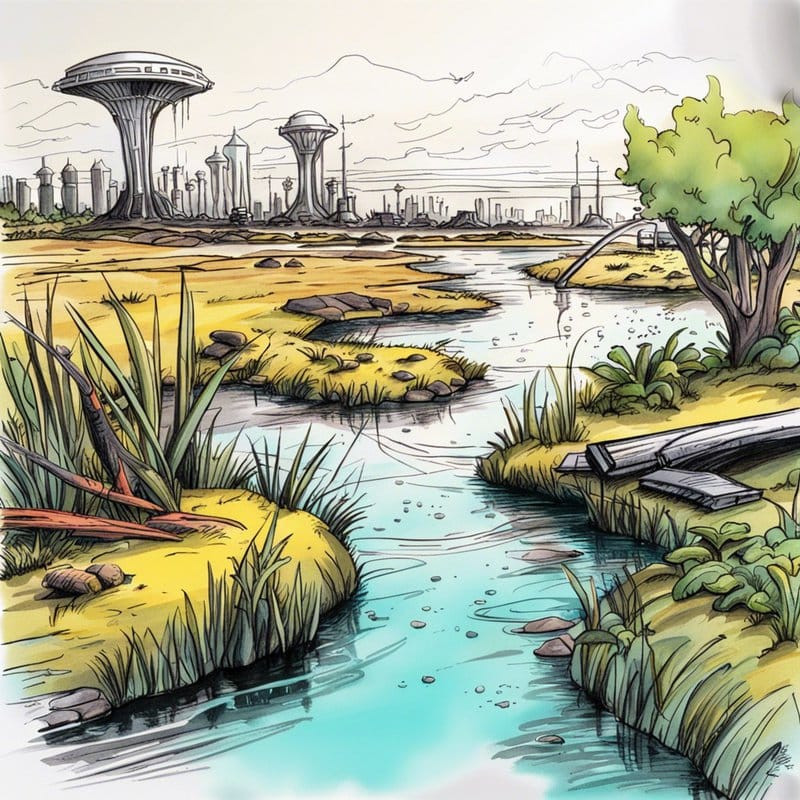Wetlands are among the most important ecosystems on our planet, providing a wide range of benefits to both humans and nature. To raise awareness about the significance of wetlands, every year on February 2nd, we celebrate World Wetlands Day. This day serves as a reminder of the vital role that wetlands play in sustaining life and highlights the need for their conservation.

The Significance of Wetlands
Wetlands are areas where water is the primary factor controlling the environment and the associated plant and animal life. They can be found in various forms such as marshes, swamps, bogs, and floodplains. These unique habitats serve as breeding grounds for countless species of plants and animals, including migratory birds.
One of the key roles played by wetlands is their ability to regulate water flow. They act like natural sponges, storing excess rainwater during periods of heavy rainfall and releasing it slowly during dry spells. This helps in preventing floods and droughts while maintaining a balanced water supply for human consumption, agriculture, and other activities.
Furthermore, wetlands act as filters for pollutants by trapping sediment and absorbing nutrients from agricultural runoff or industrial waste. They improve water quality by removing harmful substances before they reach rivers or lakes.
The Celebration of World Wetlands Day
World Wetlands Day was established in 1997 to commemorate the signing of the Ramsar Convention on Wetlands in 1971. The Ramsar Convention is an international treaty aimed at conserving and sustainably utilizing wetland resources worldwide.
Each year, World Wetlands Day focuses on a specific theme related to wetland conservation. The theme for 2021 is "Wetlands and Water," emphasizing the crucial role that wetlands play in preserving freshwater resources.
Events are organized around the world to celebrate this day, including educational programs, community clean-ups, birdwatching excursions, and guided tours of wetland areas. These activities aim to engage people of all ages in understanding the importance of wetlands and inspire them to take action for their conservation.
Well-Known Wetlands of India
India is blessed with a diverse range of wetlands that are home to a rich variety of flora and fauna. Some of the most well-known wetlands in India include:
- Chilika Lake, Odisha: Asia's largest brackish water lagoon, famous for its migratory bird population and biodiversity.
- Sunderbans, West Bengal: A UNESCO World Heritage Site and the largest mangrove forest in the world, renowned for its Royal Bengal Tigers.
- Keoladeo National Park, Rajasthan: A designated Ramsar Site and a haven for over 370 species of birds.
- Loktak Lake, Manipur: The largest freshwater lake in Northeast India, known for its unique floating phumdis (masses of vegetation).
- Bhitarkanika Mangroves, Odisha: A significant habitat for saltwater crocodiles and nesting Olive Ridley turtles.
These wetlands not only provide sanctuary to numerous species but also contribute to the livelihoods of nearby communities through fishing, agriculture, tourism, and other activities.
Conclusion
As we celebrate World Wetlands Day, it is crucial to recognize the immense value that wetlands hold for our planet. They are not just beautiful landscapes but essential ecosystems that support life in various ways. It is our responsibility to protect and conserve these fragile habitats for future generations.
For young audiences in India, understanding the significance of wetlands can help foster a sense of environmental stewardship from an early age. By learning about wetlands and their role in maintaining ecological balance, they can become advocates for their conservation. Let us come together to protect these invaluable resources so that they continue to thrive and benefit both nature and humanity.
